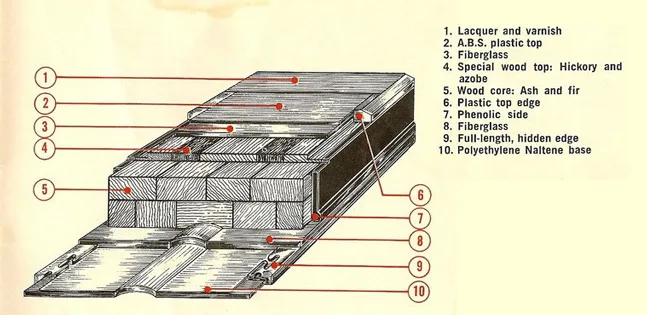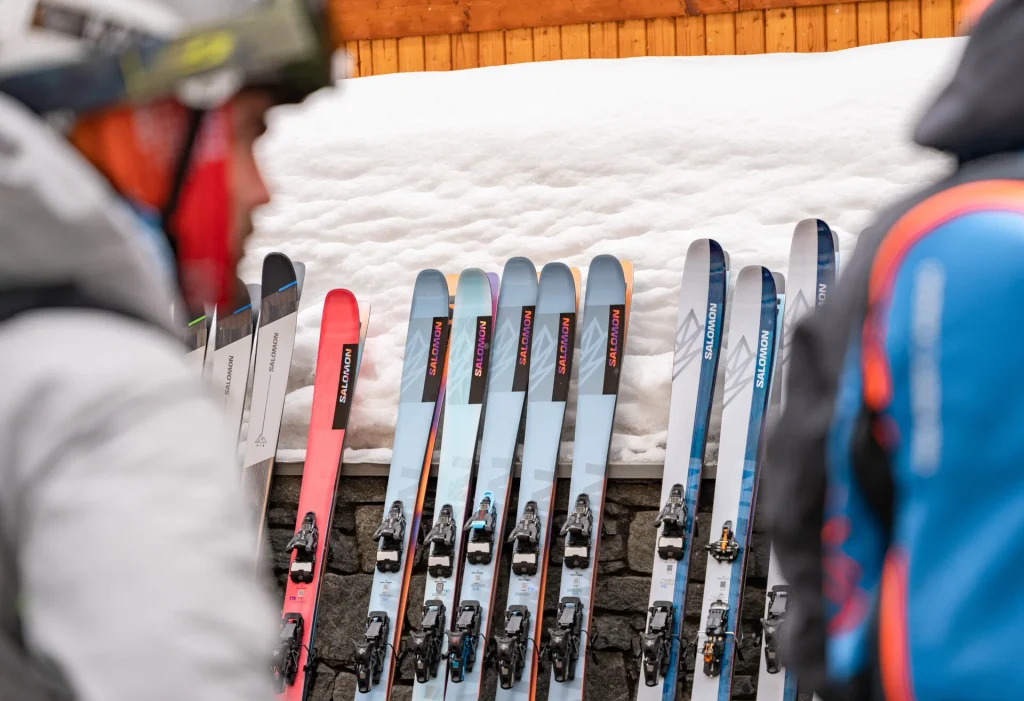The evolution of skis to the present day
Before becoming a leisure activity and a competitive sport, skiing was above all a means of transport, particularly in the Nordic countries, Siberia and the mountains of Central Asia.
From then on, skiing has continued to evolve: it is no longer a simple plank of wood but a complex object whose structure is studied down to the smallest detail.
10 years ago, the ancestor of skis
Dated to more than 8 BC, the first skis in history were found in northern China. Made of wood, they measured nearly 000m and were covered with horse skin.
Other skis dated around 6 BC were also found in Russia, the binding being made of a simple leather strap.
Numerous other discoveries establish the continued use of skis since these times. Skiing then made it possible to move more easily and quickly in these areas covered in snow for a large part of the year.

The beginnings of modern skiing
Modern skiing, as we practice it today, comes to us from Norway where the first ski factory opened in 1886.
Recognized specialists in this activity, a few Norwegians became the first international instructors, in the civil and military fields.
Two different ski techniques will then be developed and they will take the names of the Norwegian mountains where they were invented: Christiania and Telemark.
Current alpine skiing has its origins in Christiania techniques, easier and faster than the Telemark turn.
In France, the first pair of industrial skis left the factories in 1893 and at that time, the skis were made of wood.
They are generally designed in glulam with a layer of hickory (North American wood) or beech on the sliding side and a top layer of fir, linden or other soft wood over the entire length.
Although light, these skis were very fragile due to water-soluble glues. The skis were deforming and delaminating after just a few days of use. From 1910, new glues were created to make skis stronger.
From 1928, the first metal edges appeared, preventing wear on the soft parts of the wood and providing greater precision in ski control.
The arrival of new materials
The winter of 1950 marked the beginning of a new type of ski which not only no longer gave in to stress but also made turning incredibly easy. They are made of a plywood core located between two aluminum plates, plastic for the edges and metal edges in one piece.
The 60s saw the invention of ski stops, thus reducing accidents linked to the use of leashes (straps attached to the feet).
In 1964, the Rossignol Strato became the best-selling ski in the world. This model was designed with a glued laminated wood core and fiberglass composite and epoxy resin skins.


The assembly of all components, including the edges, was carried out in a single gluing-molding operation with a press. This ski left its mark on skiers thanks to its wasp waist which gave the sensation of turning on its own.
The ski industry therefore invested massively in the 70s and 80s to improve materials and new vibration absorption technologies were also found. Other work also concerns the size of the skis to adopt, the location of the bindings, etc.

With the practice of carving, the first parabolic skis finally appeared in the mid-90s and were very successful. At the same time, the first twin-tip skis were developed for more “fun” practices; this was the beginning of freestyle skiing and snowparks.


In the 2000s, the shapes of skis will further evolve. We now find skis that are larger or smaller and more or less wide to allow you to have the best possible sensations for each practice: racing, carving, freeride, freestyle, etc.
The latest big development to date is the “rocker”, an innovation from the United States which consists of lengthening the rise of the spatula. This allows you to float in powder snow and pivot more easily, while maintaining a classic “camber” preserving good grip on the slopes.
Today, although a wood core remains the basis of many skis, research continues actively among ski manufacturers who give pride of place to nanomaterials and other composite materials.

If you want to change skis, remember to consult the article from the start of the season on how to choose the right skis.
I hope you learned something from reading this article as I did while writing it.
Themes






